Kreg Rip-Cut Handleiding
Kreg
Zaagmachine
Rip-Cut
Bekijk gratis de handleiding van Kreg Rip-Cut (24 pagina’s), behorend tot de categorie Zaagmachine. Deze gids werd als nuttig beoordeeld door 86 mensen en kreeg gemiddeld 4.3 sterren uit 43.5 reviews. Heb je een vraag over Kreg Rip-Cut of wil je andere gebruikers van dit product iets vragen? Stel een vraag
Pagina 1/24

Rip-Cut
™
ITEM No. KMA2685-INT
NK9036
Version 2 - 02/2019
www.kregtool.com • 800.447.8638
Owner’s Manual | Benutzerhandbuch | Guide d’utilisation | Manual del propietario

!
WARNING When using electric tools, always follow the safety precautions below to reduce the risk of re, electric shock
and personal injury. Read all of these instructions before attempting to operate this product. SAVE THESE INSTRUCTIONS.
General Safety Guidelines
1) Work area safety
a) Keep work area clean and well lit. Cluttered or dark areas
invite accidents.
b) Don’t use power tools in a dangerous environment. Don’t use
power tools in damp or wet locations, or expose them to rain.
c) Do not operate power tools in explosive atmospheres,
such as in the presence of flammable liquids, gases or dust.
Power tools create sparks that can ignite the fumes or dust.
d) Keep children and bystanders away while operating a
power tool. Distractions can cause you to lose control.
e) Make your workshop childproof. Use padlocks or master
switches, or remove starter keys.
2) Electrical safety
a) Earth electric tools. If the tool is equipped with a three-
prong plug, it must only be plugged into an earthed three-
hole electrical socket. If the proper socket is not available,
have one installed by a qualified electrician. Never remove
the third prong or modify the provided plug in any way.
b) Do not expose power tools to rain or wet conditions. Water
entering a power tool increases the risk of electric shock.
c) Do not abuse the cord. Never use the cord for carrying,
pulling or unplugging the power tool. Keep cord away
from heat, oil, sharp edges and moving parts. Damaged or
entangled cords increase the risk of electric shock.
d) Use a proper extension cord and make sure it is in good
condition. When using an extension cord, make sure that you
use one that is heavy enough to carry the current your power
tool draws. An undersized cord causes a drop in line voltage
resulting in loss of power and overheating. Table 1 shows the
correct cord gauge to use depending on cord length and tool
nameplate ampere rating. If in doubt, use the next heavier
gauge. The smaller the gauge number, the heavier the cord.
e) When operating electric tools, avoid body contact with
earthed surfaces such as pipes, radiators, kitchen hobs and
refrigerators. Contact with an earthed surface increases the
risk of electric shock.
3) Personal safety
a) Stay alert, watch what you are doing and use common
sense when operating a power tool. Do not use a power tool
while you are tired or under the influence of drugs, alcohol or
medication. A moment of inattention while operating power
tools can result in serious personal injury.
b) Always wear safety glasses. Everyday glasses are not
safety glasses. Safety glasses have specially constructed
lenses, frames and side shields.
c) Use safety equipment. Use a face or dust mask when the
cutting operation is dusty. Safety equipment such as a dust
mask, non-skid safety shoes, hard hat or hearing protection
used for appropriate conditions reduces personal injuries.
d) Avoid accidental starting. Make sure the switch is in the
off-position before plugging in. Carrying power tools with
your finger on the switch or plugging in power tools that have
the switch on invites accidents.
e) Remove any adjusting key or wrench before turning the
power tool on. A wrench or a key left attached to a rotating
part of the power tool can result in personal injury.
f) Do not overreach. Keep proper footing and balance at
all times. This enables better control of the power tool in
unexpected situations.
g) Secure workpieces. Use clamps or a vice to hold work
when practical. This is safer than using your hand and it frees
both hands to operate the tool.
h) Never stand on the machine. Serious injury can occur if the
tool tips or if the cutting tool is unintentionally contacted.
i) Dress properly. Do not wear loose clothing or jewellery.
Keep your hair, clothing and gloves away from moving parts.
Loose clothes, jewellery or long hair can be caught in moving
parts. Roll up long sleeves to the elbow. Wear protective hair
covering to contain long hair.
j) If devices are provided for the connection of dust extraction
and collection equipment, ensure these are connected and
properly used. Use of these devices reduces dust-related
hazards.
4) Power tool use and care
a) Keep guards in place and in working order.
b) Do not force the power tool. Use the correct power tool for
your application. The correct power tool will do the job better
and more safely at the rate for which it was designed.
c) Use the right tool. Don’t force a tool or attachment to do
a job for which it was not designed.
d) Do not use the power tool if the switch does not turn it on
and off. Any power tool that cannot be controlled with the
switch is dangerous and must be repaired.
e) Disconnect the plug from the power source and/or
the battery pack from the power tool before making any
adjustments, changing accessories or storing power tools.
Such preventive safety measures reduce the risk of starting
the power tool accidentally.
f) Never leave a tool running unattended. Turn power off.
Do not leave the tool until it has come to a complete stop.
g) Store idle power tools out of the reach of children and
do not allow persons unfamiliar with the power tool and
these instructions to operate the power tool. Power tools are
dangerous in the hands of untrained users.
h) Maintain power tools. Check for misalignment or binding
of moving parts, broken parts and any other condition that
can affect power tool operation. If damaged, have the power
tool repaired before use. Many accidents are caused by
poorly maintained power tools.
i) Keep cutting tools sharp and clean. Properly maintained
cutting tools with sharp cutting edges are less likely to bind
and are easier to control.
j) Use the recommended speed for the cutting tool or
accessory and workpiece material.
k) Only use parts and accessories recommended by the
manufacturer. Consult the owner’s manual for recommended
accessories. Using improper accessories can cause personal
injury.
l) Use the power tool, accessories and tool bits in accordance with
these instructions and in the manner intended for the particular
type of power tool, taking into account the working conditions and
the work to be performed. Use of the power tool for operations
different from those intended can result in a hazardous situation.
5) Service
a) Have your power tool serviced by a qualified repair person
using only identical replacement parts. This ensures that the
safety of the power tool is maintained.
6) SAFETY INSTRUCTIONS SPECIFIC TO USING THE RIP-CUT™
a) Before using the Rip-Cut™, read, understand and follow
the safety warnings and operation instructions included with
this product and provided by your saw manufacturer. Keep all
guards and safety devices in place.
b) Wear correct eye, ear and respiratory protection when
operating your saw.
c) Use a sharp blade designed for the type of material you are
cutting.
d) Always disconnect your saw from power before making
adjustments to the saw or Rip-Cut
™.

General Safety Guidelines
TABLE 1
Nameplate
Amperes
@120 V
Extension Cord Length
25' 50' 75' 100' 150' 200'
Recommended Wire Gauge
0 -5 16 16 16 14 12 12
5.1 - 8 16 16 14 12 10 NR
8.1 -12 14 14 12 10 NR NR
12.1 - 16 12 12 NR NR NR NR
NR – Not Recommended
WARNING:
!
This product can expose you to chemicals including Acrylonitrile
and other chemicals, which are known to the State of California to cause cancer and
reproductive harm. For more information, go to www.P65Warnings.ca.gov.
e) Check the cursor alignment before you cut.
f) Ensure that the saw blade will not contact the edge guide
during the cut.
g) Do not attempt a cut when any part of the Rip-Cut
™ sled
interferes with the operation of the saw blade guard.
h) Fully support both the workpiece and the cut-off piece to
prevent binding and kickback.
i) Adjust the depth of cut so that the saw blade protrudes
1⁄ [3 mm] through the workpiece during the cut.8”
j) Keep your hands away from the saw blade during
operation. Do not reach under the workpiece while cutting.
k) Secure your workpiece to ensure that it doesn’t move
during the cut.
l) Do not use excessive force when cutting.
Maintain a steady and controlled pace.
m) Allow the saw blade to come to a complete stop before
lifting the Rip-Cut from your workpiece.
n) Maintain your tools and accessories.
Check for misalignment or binding of moving parts, loose
fasteners, broken parts and any other condition that may
affect safe operation. If an unsafe condition is discovered,
correct it before use.
7) Kickback
Kickback is a sudden reaction to a pinched, bound or
misaligned saw blade, causing an uncontrolled saw to lift
up and out of the workpiece towards the operator.
8) Causes of kickback
a) When the blade is pinched or bound tightly by the kerf
closing in, the blade stalls and the motor reaction drives the
unit rapidly back towards the operator.
b) If the blade becomes twisted or misaligned in the cut,
the teeth at the back edge of the blade can dig into the top
surface of the wood causing the blade to climb out of the kerf
and propel the saw back towards the operator.
Preventing kickback
Kickback is the result of tool misuse and/or incorrect
operating procedures or conditions and can be avoided
by taking proper precautions.
a) Maintain a firm grip with both hands on the saw and
position your body and arms to resist kickback forces.
Kickback forces can be controlled by the operator if proper
precautions are taken.
b) When the blade starts to bind, or when interrupting
a cut for any reason, release the trigger and hold the
saw motionless in the material until the blade comes to
a complete stop. Never attempt to remove the saw from the
work or pull the saw backwards while the blade is in motion.
Investigate and take corrective actions to eliminate the cause
of blade binding.
c) When restarting a saw in the workpiece, centre the saw
blade in the kerf and check that the saw teeth are not
engaged in the material. If the saw blade is binding, the blade
may climb out of the workpiece and kick back as the saw is
restarted.
d) Support large panels to minimise the risk of blade pinching
and kickback. Large panels tend to sag under their own
weight. Supports must be placed under the panel on both sides
of the cut: near the cutline and near the edge of the panel.
e) Do not use a dull or damaged blade. A dull or improperly
sharpened blade produces a narrow kerf, causing excessive
friction, blade binding and kickback.
f) Blade depth and bevel adjusting locks must be tight and
secure before making a cut. If blade adjustment shifts while
cutting, it may cause binding and kickback.
g) Use extra caution when making a plunge cut into existing
walls, floors or other blind areas. The protruding blade
may come into contact with unseen objects that can cause
kickback.
Guidelines for extension cord use
Extension cords are only to be used for temporary purposes.
They do not replace the need for installation of sockets and
proper wiring where necessary.
In the workshop and on construction sites:
1. Extension cords with an equipment earthing conductor
must be used at all times.
2. Extension cords must be protected from damage, and
not run through doorways or windows where the doors
or windows can close, causing damage to the cord.
3. Extension cords must be a minimum of 16 AWG and be
rated for the equipment in use.
4. Extension cords must be periodically inspected to ensure
that the insulation and conductivity of the wires are not
compromised.
5. Extension cords should not be run through water or
allowed to have connections that may be exposed to
accumulated water.
Product specificaties
| Merk: | Kreg |
| Categorie: | Zaagmachine |
| Model: | Rip-Cut |
Heb je hulp nodig?
Als je hulp nodig hebt met Kreg Rip-Cut stel dan hieronder een vraag en andere gebruikers zullen je antwoorden
Handleiding Zaagmachine Kreg

4 Juni 2023

27 Mei 2023

13 Mei 2023
Handleiding Zaagmachine
- Wolfcraft
- Sun Joe
- King Craft
- Fein
- Toolcraft
- McKenzie
- Zipper
- Maxbear
- Jonsered
- Florabest
- Westfalia
- Sthor
- Meister Craft
- Snow Joe
- Tryton
Nieuwste handleidingen voor Zaagmachine
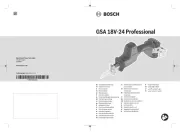
15 September 2025
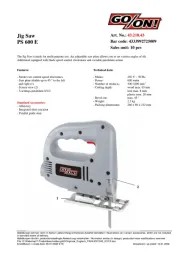
7 September 2025
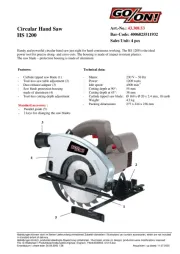
7 September 2025
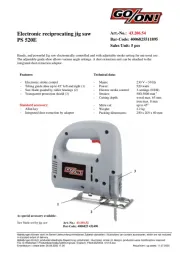
7 September 2025
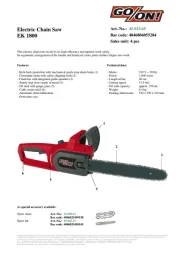
7 September 2025
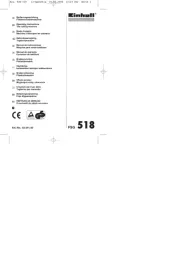
2 September 2025
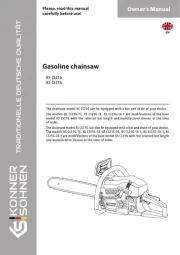
2 September 2025
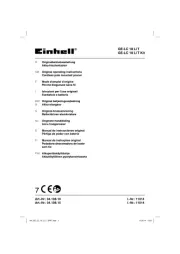
2 September 2025
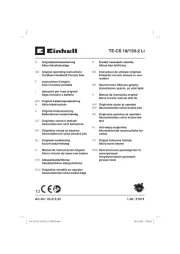
2 September 2025
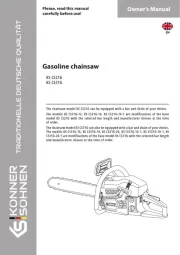
2 September 2025